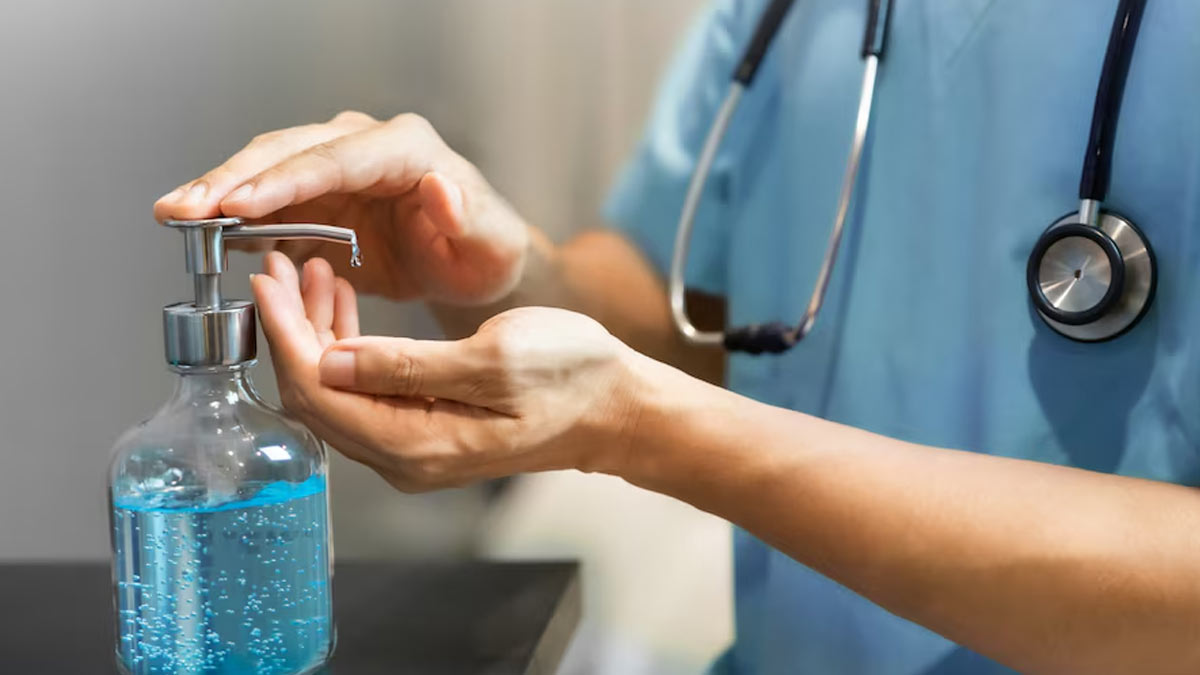
When it comes to controlling the risk of infection, we often use antiseptics or disinfectants. Both work for the same purpose and are commonly used in medical settings where the risk of infection is high. However, the two are not interchangeable and have different uses. In this article, we will unravel the differences between antiseptics and disinfectants and focus on their uses.
What Is Antiseptic?

Antiseptic is a chemical often used to clean and clear up wounds. It is used on living organisms, such as human skin, to terminate or slow down the growth of microorganisms, such as bacteria, viruses, and fungi. For instance, you may have noticed doctors rubbing their hands with an orange-tinted liquid before going for a surgical procedure. This is antiseptic.
Also Read: Nature's Defence: Expert Lists Natural Antibiotics For Battling Bacterial Infections
There are two main types of antiseptics: one that is used in a healthcare setting and the other used on a day-to-day basis. Both types kill germs on the skin, but healthcare professionals use stronger formulations more frequently.
What Is Disinfectant?
Unlike antiseptics, disinfectants are not used on living organisms. They are used primarily on non-living objects to kill germs, such as viruses, bacteria, and other microorganisms that can cause infection and disease.
While it contains the same types of chemicals used in antiseptics, their concentration is higher.
Uses Of Antiseptic

Antiseptics can be used in a variety of ways. These include:
- Hand washing, mostly used by healthcare professionals as hand scrubs and rubs
- Hand sanitizers
- Hydrogen peroxide is used to treat skin infections like burns, cuts, and wounds.
- Mouthwash
- For treating urethra, vaginal, or bladder infections
Uses Of Disinfectants

Disinfectants are used in hospitals, kitchens, bathrooms, and even schools to keep surfaces like floors, countertops, and equipment germ-free. This helps prevent the spread of illnesses by destroying bacteria, viruses, and fungi that can linger on these surfaces.
Proper disinfection, especially after cleaning visible dirt and debris, is a crucial step in maintaining a hygienic environment and reducing the risk of infections.
Also Read: Disinfect Vs Sterilize: Know Difference And Usage Of These Sanitization Processes
Therefore, disinfectants need to be handled with care and must be used properly for maximum effectiveness. Some of the things you must consider include:
- Use the disinfectant that works against the microorganism that you're targeting.
- Choose the right concentration.
- Check the expiration date.
- Understand how long the disinfectant needs to remain on the surface.
- Clean the surface before applying the disinfectant.
- Maintain a proper pH level and water temperature.
- Ensure that you take proper precautions before using the disinfectant.
Conclusion
Both antiseptics and disinfectants work with the same goal: to reduce the risk of infection by curbing the growth of microorganisms. While antiseptics can be applied to the skin, disinfectants should only be used on inanimate surfaces, such as the floor, countertops, doors, etc. It is important to not confuse the two, or the consequences can be problematic. Ensure that you take all necessary precautions while using these chemicals, as they can be hazardous for your health.
How we keep this article up to date:
We work with experts and keep a close eye on the latest in health and wellness. Whenever there is a new research or helpful information, we update our articles with accurate and useful advice.
Current Version